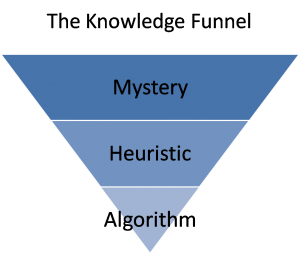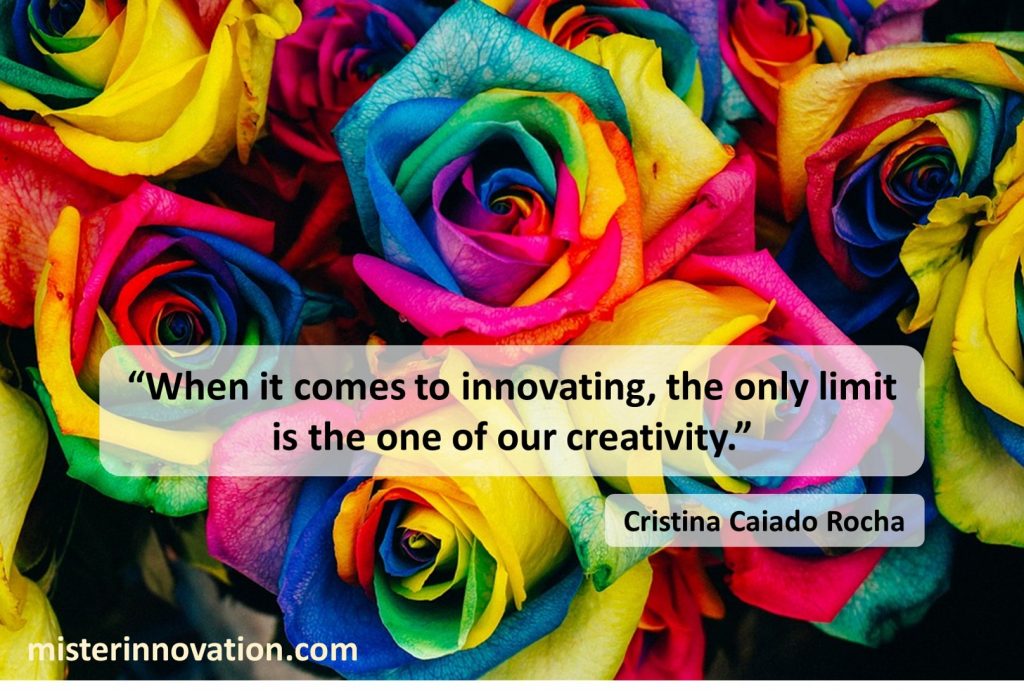
GUEST POST from Greg Satell
In 2009, Jeffrey Immelt set out on a journey to transform his company, General Electric, into a 124 year old startup. Although it was one of the largest private organizations in the world, with 300,000 employees, he sought to become agile and nimble enough to compete with high-flying Silicon Valley firms.
It didn’t end well. In 2017, problems in the firm’s power division led to massive layoffs. Immelt was forced to step down as CEO and GE was kicked off the Dow after 110 years. The company, which was once famous for its sound management, saw its stock tank. Much like most startups, the effort had failed.
Somewhere along the line we got it into our heads that large firms can’t innovate and should strive to act like startups. The truth is that they are very different types of organizations and need to innovate differently. While large firms can’t move as fast as startups, they have other advantages. Rather than try to act like startups, they need to leverage what they have.
Driving Innovation At Scale
The aviation industry is dominated by big companies. With a typical airliner costing tens of millions of dollars, there’s not much room for rapid prototyping. It takes years to develop a new product and the industry, perhaps not surprisingly, moves slowly. Planes today look pretty much the same as ones made decades ago.
Looks, however, can be deceiving. To understand how the aviation industry innovates, consider the case of Boeing’s 787 Dreamliner. Although it may look like any other airplane, Boeing redesigned the materials within it. So a 787 is 20 percent lighter and 20 percent more efficient than similar models. That’s a significant achievement.
Developing advanced materials is not for the faint of heart. You can’t do it in a garage. You need deep scientific expertise, state-of-the-art facilities and the resources to work for years—and sometimes decades— to discover something useful. Only large enterprises can do that,
None of this means that startups don’t have a role to play. In fact one small company, Citrine Informatics, is applying artificial intelligence to materials discovery and revolutionizing the field. Still, to take on big projects that have the potential to make huge global impacts, you usually need a large enterprise.
Powering Startups
All too often, we see large enterprises and startups as opposite sides of the coin, with big companies representing the old guard and entrepreneurs representing the new wave, but that’s largely a myth. The truth is that innovation often works best when large firms and small firms are able to collaborate.
Scott Lenet, President of Touchdown Ventures, sees this first-hand every day. His company is somewhat unique in that, unlike most venture capital firms, it manages internal funds for large corporations. He’s found that large corporations are often seen as value added investors because of everything they bring to the table.
“For example,” he told me, “one of our corporate partners is Kellogg’s and they have enormous resources in technical expertise, distribution relationships and marketing acumen. The company has been in business for over 100 years and it’s learned quite a bit about the food business in that time. So that’s an enormous asset for a startup to draw on.”
He also points out that, while large firms tend to know how to do things well, they can’t match the entrepreneurial energy of someone striving to build their own business. “Startups thrive on new ideas,” Lenet says “and big firms know how to scale and improve those ideas. We’ve seen some of our investments really blossom based on that kind of partnership.”
Creating New Markets
Another role that large firms play is creating and scaling new markets. While small firms are often more agile, large companies have the clout and resources to scale and drive impact. That often also creates opportunities for entrepreneurs as well.
Consider the case of personal computers. By 1980, startups like Apple and Commodore had already been marketing personal computers for years, but it was mostly a cottage industry. When IBM launched the PC in 1981, however, the market exploded. Businesses could now buy a computer from a supplier that they knew and trusted.
It also created fantastic opportunities for companies like Microsoft, Intel and a whole range of entrepreneurs who flocked to create software and auxiliary devices for PCs. Later startups like Compaq and Dell created PC clones that were compatible with IBM products. The world was never the same after that.
Today, large enterprises like IBM, Google and Amazon dominate the market for artificial intelligence, but once again they are also creating fantastic opportunities for entrepreneurs. By accessing the tools that the tech giants have created through APIs, small firms can create amazing applications for their customers.
Innovation Needs Exploration
Clearly, large firms have significant advantages when it comes to innovation. They have resources, customer relationships and deep expertise to not only invent new things, but to scale businesses and bring products to market. Still, many fail to innovate effectively, which is why the average lifespan of companies on the S&P 500 continues to decline.
There’s no reason why that has to be true. The problem is that most large organizations spend so much time and effort fine-tuning their operations to meet earnings targets that they fail to look beyond their present business model. That’s not due to any inherent lack of capability, it’s due to a lack of imagination.
Make no mistake, if you don’t explore, you won’t discover. If you don’t discover you won’t invent and if you don’t invent you will be disrupted. So while you need to focus on the business at hand, you also need to leave some resources un-optimized so that you can identify and develop the next great opportunity.
A good rule of thumb to follow is 70-20-10. Focus 70% of your resources on developing your present business, 20% of your resources on opportunities adjacent to your current business, such as new markets and technologies and 10% on developing things that are completely new. That’s how you innovate for the long term.
— Article courtesy of the Digital Tonto blog and previously appeared on Inc.com
— Image credit: Pixabay
![]() Sign up here to join 17,000+ leaders getting Human-Centered Change & Innovation Weekly delivered to their inbox every week.
Sign up here to join 17,000+ leaders getting Human-Centered Change & Innovation Weekly delivered to their inbox every week.



 The knowledge funnel is a useful concept learned from Roger Martin in the Design of Business. The concept highlights how any new area creating information (and hopefully knowledge) starts very much as a mystery, but as our understanding of the topic area increases, we begin to identify heuristics and make sense of it. For me, this is where we begin to move from data and information to knowledge, and then as our knowledge increases we are able to codify this knowledge into algorithms.
The knowledge funnel is a useful concept learned from Roger Martin in the Design of Business. The concept highlights how any new area creating information (and hopefully knowledge) starts very much as a mystery, but as our understanding of the topic area increases, we begin to identify heuristics and make sense of it. For me, this is where we begin to move from data and information to knowledge, and then as our knowledge increases we are able to codify this knowledge into algorithms.





